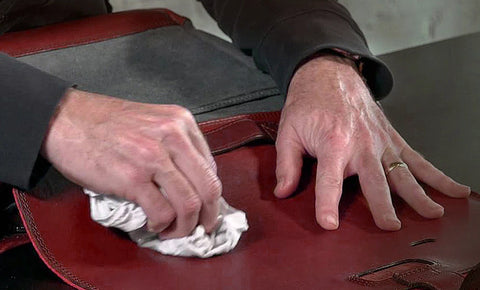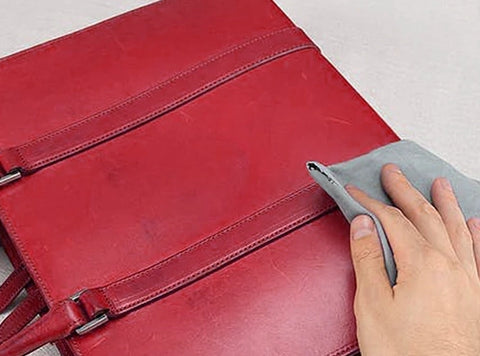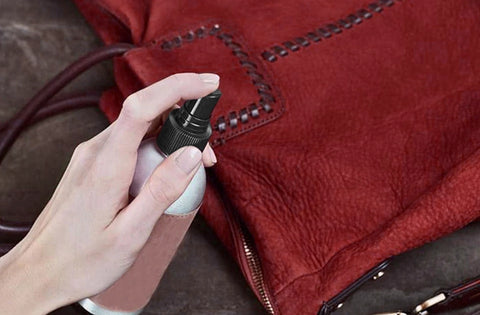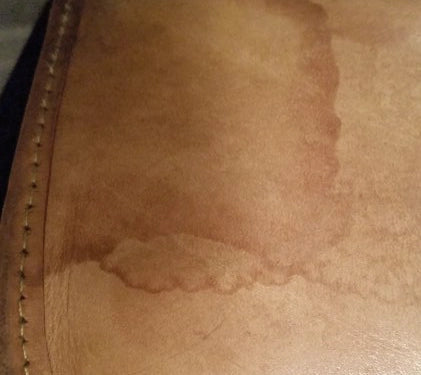Can Leather Get Wet? Understanding the Intricacies of Leather Care
- Home
- Editor's Desk
- Can Leather Get Wet? Understanding the Intricacies of Leather Care
- 3rd Anniversary Gifts
- ALL PRODUCTS
- Aprons
- BACKPACKS
- Best Sellers
- Bridesmaid Gifts
- BUSINESS PORTFOLIOS
- Chef Collectibles
- Desk Mats
- Father's Day Gifts
- For the Writers
- For Your Business
- for-the- travels
- Gifts $100-$200
- Gifts $50-$100
- Gifts Under $50
- Graduation Gifts
- Groomsmen Gifts
- Holiday Gifting
- KNIFE ROLLS
- LEATHER JOURNALS
- Men Collection
- MEN WALLETS
- MESSENGER BAGS
- MISCELLANEOUS
- Mother's Day Gifts
- New arrivals
- PENCIL CASES
- Rustic Town X Women
- SATCHEL
- TOILETRY BAGS
- Totes
- TRAVEL BAGS
- Travel Essentials
- Watch Case
- WOMEN BAGS
- Women Collection
- Women Wallets
- ##bound
- #2024
- #aestheticjournal
- #AffordableLeatherGoods
- #AirlineGuidelines
- #americanbisonvsbuffalo
- #americanbuffalovsbison
- #AmericanWildlife
- #antiquejournal
- #apron
- #ApronComfort
- #ApronCraftsmanship
- #ApronFashion
- #ApronInspiration
- #ApronProtection
- #aprons
- #ApronStyle
- #ArtisanApron
- #ArtisanLeather
- #ArtOfWriting

Leather, with its timeless appeal and durability, has been a favorite material for centuries. However, one question that often surfaces is: Can leather get wet? This query opens a pandora's box of concerns regarding leather maintenance, its reaction to water, and care strategies. Let's delve into the nuances of leather and water interaction, ensuring your cherished leather items remain in pristine condition.
Can Leather Get Wet?
The short answer is yes, leather can get wet. However, it's not as straightforward as it sounds. Leather is a natural material that, while somewhat resilient, requires care and attention, especially when it comes to moisture. The real question isn't whether leather can get wet but rather how it responds to water and what you can do about it.
What Does Water Do to Leather?
When leather gets wet, it doesn't just absorb water; the water interacts with its natural components in ways that can alter its texture, color, and durability. Wet leather can lose its natural oils and tannins during the drying process. This loss is crucial because these oils and tannins contribute to leather's flexibility and strength. As the leather dries, it may become stiff and brittle, leading to unpleasant consequences like cracking and water stains.

Does Leather Shrink When It Gets Wet?
Indeed, leather can shrink when it gets wet and dries improperly. This shrinkage is attributed to the fibers in the leather tightening up as they lose moisture and then fail to return to their original state due to the loss of natural oils.
Types of Leather and Their Water Resistance
Not all leather is created equal, especially when it comes to water resistance. Let's explore:
- Bonded Leather: Known for its affordability, bonded leather has minimal water resistance due to its composition of leather scraps and polyurethane binder.
- Suede and Nubuck: These leathers have a velvety surface that absorbs water easily, making them more susceptible to water damage.
- Full-Grain Leather: As the highest quality of leather, full-grain retains its natural markings and durability. It's more water-resistant than its counterparts but still vulnerable to water damage over time.
The Tanning Process and Its Impact
The tanning process is pivotal in determining leather's water resistance:
- Chrome-Tanned Leather: Utilizes chromium salts, resulting in a more flexible and water-resistant leather. Ideal for items that may face occasional wet conditions.
- Vegetable-Tanned Leather: Employs natural tannins from plants, producing a leather that is less water-resistant and more prone to water stains.
Symptoms of Water-Damaged Leather.
Though water itself may not directly damage leather, extended contact with water can lead to adverse effects on leather, including:
- Hardening: Leather may harden and lose its suppleness upon getting wet and subsequently drying, which could diminish its comfort and usability.
- Color Changes: Exposure to water might temporarily darken or alter the hue of leather, particularly in lighter shades. While it may revert to its original color upon drying, variations might remain.
- Cracking and Deformation: Prolonged moisture can weaken and stretch the fibers of the leather, causing it to deform or crack as it dries, especially without proper conditioning.
- Fungal Growth: Damp conditions are conducive to fungal growth, such as mold and mildew, on leather. This not only damages the leather's fibers but can also produce an unpleasant smell.
What To Do if Leather Gets Wet.
If your leather item becomes wet, follow these guidelines to minimize potential harm. Start by lightly patting the item with a dry cloth to remove any excess water. Avoid spreading or pressing the moisture deeper into the leather.
For leather footwear or bags, it might be necessary to absorb moisture from the inside. Newspapers, crumpled and placed inside, are effective at soaking up water, leaving less moisture to evaporate.

Next, proceed with the drying phase. Allow the leather to air dry until it is merely damp, avoiding complete dryness at this stage.
- Air Drying - It's important to air dry leather at ambient room temperature. Using artificial heat sources, like hair dryers, can worsen water damage by causing the leather to become hard and brittle.
Also, keep leather away from direct sunlight while drying. The sun's heat can adversely affect the drying process, as well as the leather's natural textures and colors.
- Conditioning - Once the leather is just damp, condition it. Use a clean cloth to apply a leather conditioner. There are various conditioners available, so review their ingredients to understand their benefits.
Apply the conditioner gently in circular motions. This step concludes the care needed to address water exposure, aiming to preserve and protect the leather.
Consequences of Wet Leather?
Wet leather can suffer from a range of adverse effects, including alterations in its texture, appearance, smell, and the potential for decay.
When exposed to water, leather transitions from a soft and pliable state to one that's hard, stiff, and significantly heavier. This change occurs as water infiltrates the leather, combining with its natural oils. These oils are essential for keeping leather moisturized and conditioned, akin to how oils are beneficial for human skin. However, as the water evaporates, it also removes these crucial oils, leaving behind a desiccated material. Consequently, the leather may crack, become brittle, and succumb to leather rot or dry rot.
While occasional splashes might not immediately dry out leather items, they can result in unsightly stains and watermarks. In some cases, the tanning process incorporates salt, which can migrate to the surface of the leather when it becomes wet, forming salt stains.
Furthermore, leather that is continuously exposed to excessive moisture or humidity can develop a stale, musty odor.
How to Waterproof Leather?
Are you on the hunt for reliable methods to waterproof your leather items? Let's delve into two renowned techniques designed to prolong the life and maintain the health of your leather possessions. It's crucial to recognize from the outset that various leather types demand distinct approaches. For instance, the more fragile suede leather is prone to water damage compared to its sturdier counterparts, necessitating a more robust waterproofing approach.
It is also wise to conduct a patch test on a hidden area of your leather item before fully applying any treatment. This precaution helps ensure that the treatment won't cause unsightly stains.
The Waxing Method
A popular technique to waterproof leather, while also keeping it pliable and smooth, involves the use of homemade leather wax. This DIY approach not only saves time and money in the long run but is also straightforward to execute. Leather waxes are also available for purchase if you prefer not to make your own. For those who already have a leather wax, proceed to step 4 for guidance on proper application.

To create the wax, gather a clean buffing cloth, cold water in a medium pan, a glass jar, beeswax (2 ounces), and extra virgin olive oil (1 cup).
Begin by placing the olive oil into the jar, followed by the beeswax broken into small chunks. Warm the pan of water on the stove and situate the jar within, stirring the mixture gently. This process allows the beeswax to melt into the olive oil. Continue stirring until the beeswax fully integrates into the oil.
After removing the jar from the heat, continue stirring as the mixture cools and thickens, a process that might take 10-20 minutes. Aim for a well-mixed concoction.
Before applying the wax, ensure your leather item is clean to avoid sealing in dirt. Once the wax has cooled, conduct a spot test. If there are no stains, proceed to apply the wax lightly with the buffing cloth, adding more as necessary. The wax may leave a greasy film, so use it sparingly. Allow 30-60 minutes for absorption.
Apply 2-3 layers of wax, buffing between applications to build a protective layer. Maintain this treatment a few times annually to keep your leather waterproof.
Water Repellent Sprays

A viable alternative to waxing, water repellent sprays cater to various leather types, including suede, everyday leather, and full-grain sprays. Identifying your item's leather type ensures appropriate treatment.
These sprays form a protective barrier against moisture, preserving the leather's flexibility and preventing drying. Available online, it's important to patch test these sprays too, to avoid potential staining.
Benefits of Waterproofing Leather
Waterproofing leather comes with several clear benefits, such as helping your high-quality full-grain leather items, like wallets and backpacks, maintain their new appearance for a longer time. Essentially, by applying a waterproof coating, it minimizes the risk of water seeping into the leather and affecting its natural oils, which are crucial for keeping the leather soft. This leads to the leather looking healthier and maintaining a more even and natural look and feel.
Moreover, making leather waterproof significantly extends the life of the product. The protective barrier created by waterproof treatments prevents the leather from becoming dry and cracking, thereby enhancing its durability and ensuring it can be used longer. It also greatly lowers the likelihood of the leather developing rot.
Lastly, waterproofing your leather offers enhanced protection against the elements, which is particularly important for items used outdoors.
How to Get Water Stains Out of Leather?
Water stains on leather can be both unsightly and damaging over time. However, with the right approach and some care, it's possible to remove these stains and restore your leather items to their former glory. Here are steps you can follow to effectively remove water stains from leather:

- Blot the Area: If the stain is fresh, begin by gently blotting the excess water with a clean, dry cloth. Avoid rubbing as this can push the water deeper into the leather.
- Let it Dry Naturally: Allow the leather to air dry naturally. Do not use a hairdryer or place it in direct sunlight, as rapid drying can cause the leather to become stiff and crack.
- Condition the Leather: Once dry, apply a small amount of leather conditioner to a soft cloth and gently rub it over the stained area. Leather conditioner helps to moisturize the leather, preventing it from drying out and cracking. It can also help to blend the water stain with the rest of the item.
- Use a Specialized Leather Cleaner: For stubborn stains, consider using a leather cleaner designed for your type of leather. Apply a small amount of the cleaner to a soft cloth and gently dab it onto the stain. Follow the product’s instructions carefully.
- Buff the Area: After cleaning and conditioning, use a dry, soft cloth to buff the area gently. This will help restore the leather's natural shine and finish.
- Avoid Future Stains: To prevent future water stains, consider applying a leather protector spray that repels water and other liquids. This can provide a barrier against spills and stains, making them easier to clean up if they do occur.
It’s important to note that different types of leather may require different care methods. Always test any cleaner or conditioner on a small, inconspicuous area first to ensure it does not cause discoloration or damage. If you're unsure or if the item is of significant value, consulting a professional leather cleaner is the best course of action.
In conclusion, while leather possesses inherent resilience and timeless charm, its susceptibility to water necessitates diligent care and maintenance. By understanding the effects of water on leather, implementing proactive preventive measures, and adopting appropriate remedial techniques, you can safeguard your cherished leather possessions for generations to come.
Shop Our Leather Collection of:
Travel Bag | Messenger Bag | Women Bags | Journals | Portfolios | Toiletry Bags | Satchels | Pencil Cases | Knife Roll











